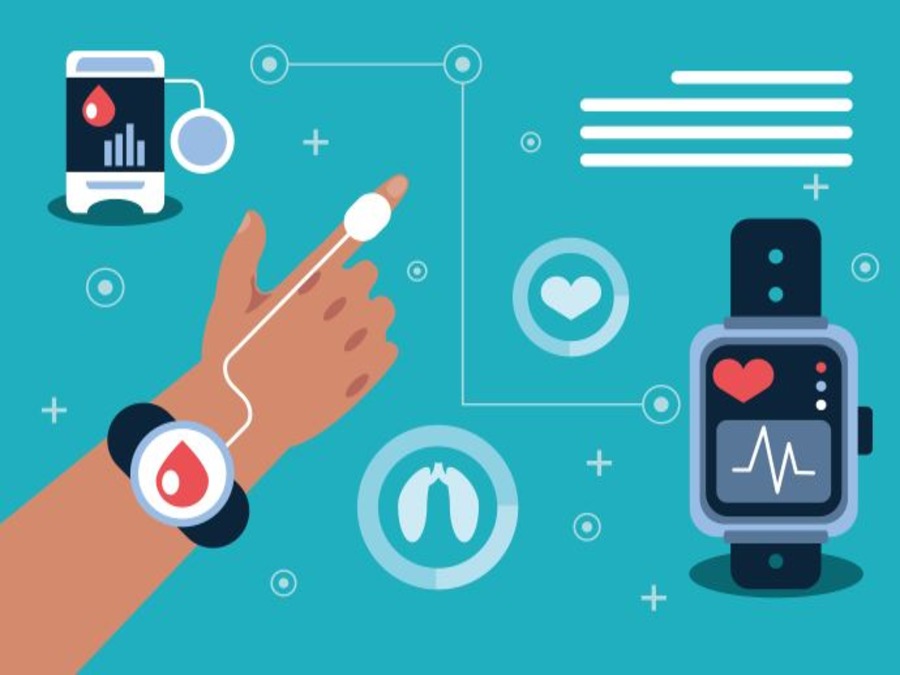Stay Connected, Stay Healthy: Wearables in Modern Medicine
In this modern world, staying connected goes beyond social Medias and entertainment. We, people are really thankful to the rapid advancement in wearable technology because it now includes our overall health and well-being by developing into very advanced health monitors. These gadgets, which range from fitness bands and smart watches to sophisticated biosensors and wearables for medical use, are becoming indispensable in the healthcare industry. Recent research indicates that the global market for wearable medical devices is anticipated to increase to $46.6 billion by 2025, a reflection of the devices’ increasing significance and broad use.
Modern healthcare technology comprises medical devices intended to diagnose and cure disease as well as lessen the number of in-person visits needed for patients with chronic disorders. The COVID-19 pandemic turned out to be a blessing for smart wearables, as it provided the medical industry with a huge window of opportunity to infiltrate homes and establish a standard procedure for tracking general well-being. Patients and healthcare professionals can benefit greatly from the usage of wearable technology in the medical field. Some of the most significant advantages are:
Vital statistics are tracked in real time for health, giving researchers access to data earlier for analysis: In addition to monitoring patients’ vitals while they are ill, wearables are useful instruments that continue to record biometric data even when users are well in order to assist in the diagnosis and treatment of illnesses.
Early illness identification or catastrophic health event risk assessment: As wearables are used consistently, they create a customized and distinct health model for each user, continuously monitoring for anomalies that could indicate the early identification of acute illnesses or the chance of chronic or preexisting problems.
Maintaining Patient Engagement: When patients begin using wearable technology to track their own health, they become much more involved in their routines and overall well-being. Monitoring themselves gives them a sense of control over their health.
Facilitated exchange of health information between clinicians and remote patients across the patient care ecosystem: Wearables make it possible for patient data to become more democratic and decentralized by establishing a new data flow that is independent of healthcare professionals. Another significant advantage is the ease with which these wireless, WiFi- and Bluetooth-capable gadgets may now send data to portable mobile devices for the need for data synchronization.
Reducing in-person consultations: Using this technology will also result in fewer in-person consultations, which will lessen the strain for staff members. Hospitals will gain from this as well since their staff will be more inspired and driven.
Wearable technology is becoming more and more popular, and both patients and physicians are already gaining from its features and capacity to collect enormous volumes of medical data.
Novel Uses for Wearable Medical Technology
Cardiac monitoring: The FDA has approved the ECG features of devices like the Apple Watch and Fitbit, enabling users to quickly seek medical attention if they notice abnormal heart rhythms.
Diabetes Management: By providing real-time blood sugar measurements, continuous glucose monitors (CGMs) enable better diabetes management through prompt dietary and medication modifications.
Sleep Apnea Detection: Wearables with cutting-edge sensors can identify symptoms of sleep apnea, a disorder that frequently goes untreated, enabling users to seek treatment sooner.
Mental Health Monitoring: Certain wearables monitor physiological signs of stress and anxiety and provide breathing exercises and mindfulness training as a means of support.
Potential future developments could be:
Integration with AI: Wearable data can be analyzed by artificial intelligence to produce tailored health advice and predictive insights.
Increased Accuracy: Wearable technology advancements in sensor technology will improve the precision and dependability of health data obtained.
Increased Capabilities: Upcoming wearables might have functions like medicine reminders, hydration tracking, and even early infection detection.
Increased Accessibility: As wearable technology gets more affordable, a larger population will be able to benefit from it, democratizing healthcare.
Thanks to wearable technology, which is completely changing the healthcare industry. In order to ensure a better future for everybody, wearable health technology will remain essential to contemporary medicine as it develops. The world of healthcare is changing as a result of wearable technology, which makes it simpler than ever to be informed about our health. Through the provision of continuous monitoring, assistance with managing chronic diseases, and encouragement of wellness, these gadgets enable people to take charge of their health and lead healthier lives. This health technology will continue to be essential to modern medicine as it develops, opening the door to a healthier future for all. Wearable technology can help you stay connected, maintain your health, and welcome the future of medicine.
Source
Featured Image

